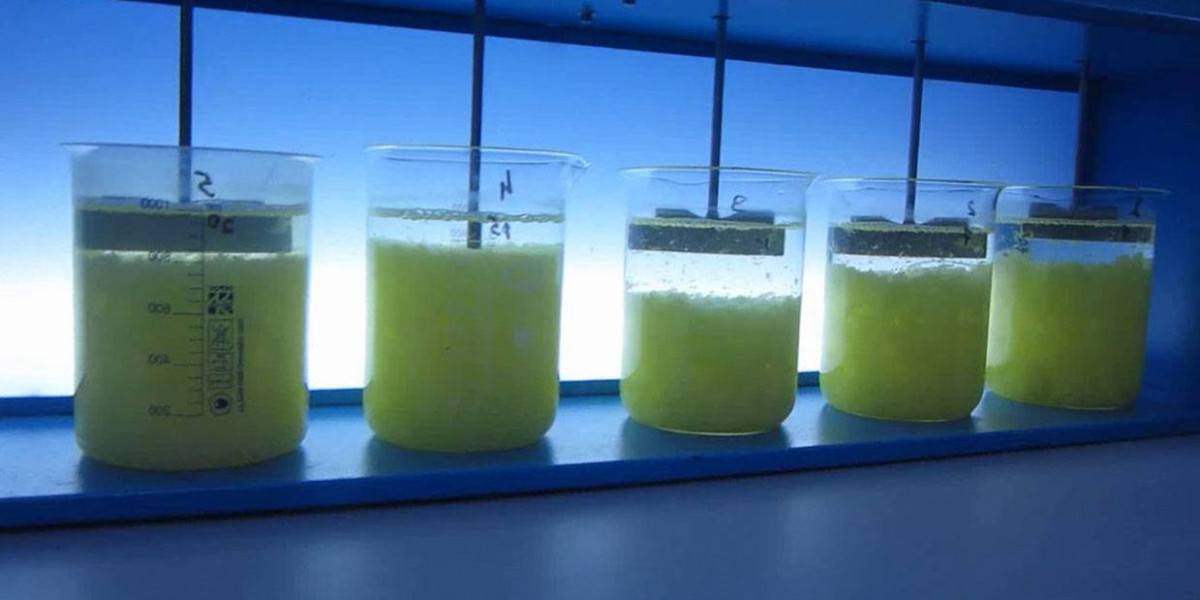Introduction
The flocculant and coagulant market in Asia-Pacific is witnessing rapid expansion, fueled by increasing industrialization, urbanization, and heightened awareness of water quality and environmental regulations. As one of the fastest-growing regions globally in terms of population and industrial output, Asia-Pacific has emerged as a critical hub for water treatment chemicals.
This article explores the key growth drivers, current trends, and market forecasts shaping the future of the flocculant and coagulant market across the Asia-Pacific region.
1. Regional Overview
Asia-Pacific accounts for a significant share of the global flocculant and coagulant market, driven by large-scale water consumption and rising demand for effective wastewater treatment solutions. Major contributing countries include:
China – Leading in industrial production and urban wastewater generation
India – Rapid urbanization and infrastructure investments in water and sanitation
Japan and South Korea – Technologically advanced markets with strict environmental norms
Southeast Asia (Vietnam, Indonesia, Thailand, Philippines) – Growing textile, food processing, and mining industries
2. Growth Drivers
a. Industrial Expansion and Wastewater Management Needs
Heavy industrial activity in sectors like textiles, chemicals, mining, pulp & paper, and oil & gas generates vast quantities of wastewater. These industries rely on coagulants and flocculants to meet discharge standards and enable water reuse.
b. Urbanization and Municipal Wastewater Treatment
The rapid rise in urban populations has led to increased wastewater volumes from households and municipalities. Governments across the region are investing in centralized treatment facilities, boosting demand in the flocculant and coagulant market.
c. Regulatory Push for Environmental Compliance
Governments in Asia-Pacific are tightening environmental norms through regulations such as:
China's Water Pollution Prevention Action Plan
India's National Mission for Clean Ganga (NMCG)
Japan's Water Pollution Control Law
These initiatives mandate stricter effluent quality and drive the need for efficient treatment chemicals.
d. Water Scarcity and Reuse Initiatives
As freshwater sources become stressed, countries like India and China are encouraging industrial water recycling and zero-liquid discharge (ZLD) systems—technologies that heavily rely on flocculation and coagulation steps.
3. Market Segmentation
By Product Type:
Inorganic Coagulants (Aluminum sulfate, Ferric chloride)
Organic Coagulants
Anionic and Cationic Flocculants
By Application:
Municipal Water Treatment
Industrial Wastewater Treatment (Textile, Mining, Oil & Gas, Food & Beverage)
4. Emerging Trends
Shift to Bio-based Flocculants: Sustainable and non-toxic products are gaining popularity, particularly in eco-conscious nations like Japan and South Korea.
Smart Dosing Systems: Automated systems for optimal chemical use are being adopted to improve efficiency and lower costs.
Localized Manufacturing: To reduce logistics costs and meet demand quickly, many global players are setting up regional manufacturing units.
5. Competitive Landscape in Asia-Pacific
Several global and regional players are active in the Asia-Pacific flocculant and coagulant market:
Kemira Oyj
BASF SE
SNF Floerger
SUEZ Water Technologies
Shandong Shuiheng Chemical Co., Ltd.
PACIFIC Chemicals Co., Ltd. (Vietnam)
These companies compete based on product performance, sustainability, and regional distribution capabilities.
6. Forecast Outlook (2025–2030)
According to industry projections:
The Asia-Pacific flocculant and coagulant market is expected to grow at a CAGR of 6–8% from 2025 to 2030.
China and India will continue to be the major revenue contributors due to ongoing industrial expansion and public infrastructure projects.
Demand for eco-friendly and high-performance polymers will accelerate, supported by rising environmental concerns and policy mandates.
Conclusion
The flocculant and coagulant market in Asia-Pacific is poised for significant growth, driven by industrial development, water scarcity, and stringent environmental policies. As the region continues to industrialize and urbanize, the importance of advanced and sustainable water treatment solutions will only grow.
Companies that invest in innovation, regional partnerships, and sustainable product development are well-positioned to capitalize on this dynamic and expanding market.









